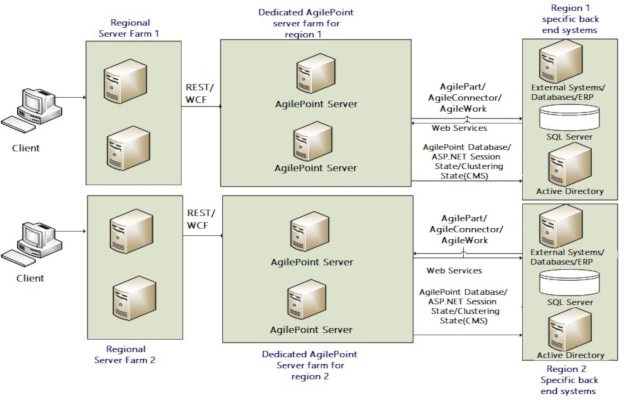Regional Deployment Architecture
Regional deployment is used for organizations that keep their AgilePoint instances isolated from one regional team to the next — for example, where an AgilePoint instance in one country is isolated from the AgilePoint instance in another country.
As process load increases, a regional deployment model is necessary for the enterprise or any organization. It provides not only layer isolation, but also 3-tier high availability and performance by clustered database, AgilePoint and front-tier applications.

Main Points
- The external front end server is not necessary if your application uses eForms as the user interface.
- The architecture can be scaled out by adding nodes to existing NLB clusters.
- The architecture can be scaled up by upgrading existing nodes (for example, increasing CPU and memory) and adding more instances of AgilePoint Server and web applications on each server.
- AgilePoint Server is database-intensive. Therefore, a faster database server increases AgilePoint Server performance.
- Users from other regional teams do not have access to your region's processes since each instance gets its own database instance. This gives you strict control over your processes.
- Upgrades can be planned independently without having to rely on other teams.
- Your AgilePoint Server machine can be scaled independently of other regional team servers.
- Better performance can be achieved since the physical server is located at the same location so network bandwidth does not become a constraint.
- Because each team has its own AgilePoint Server, business time calculation and holiday schedule can be effectively controlled for each region. As such, you will not have a task due on a holiday.
- Physical hardware cost increases because each team must buy its own hardware.
- License costs increase because each server license is charged separately.
- Each server must be upgraded separately, instead of centralized upgrades.


